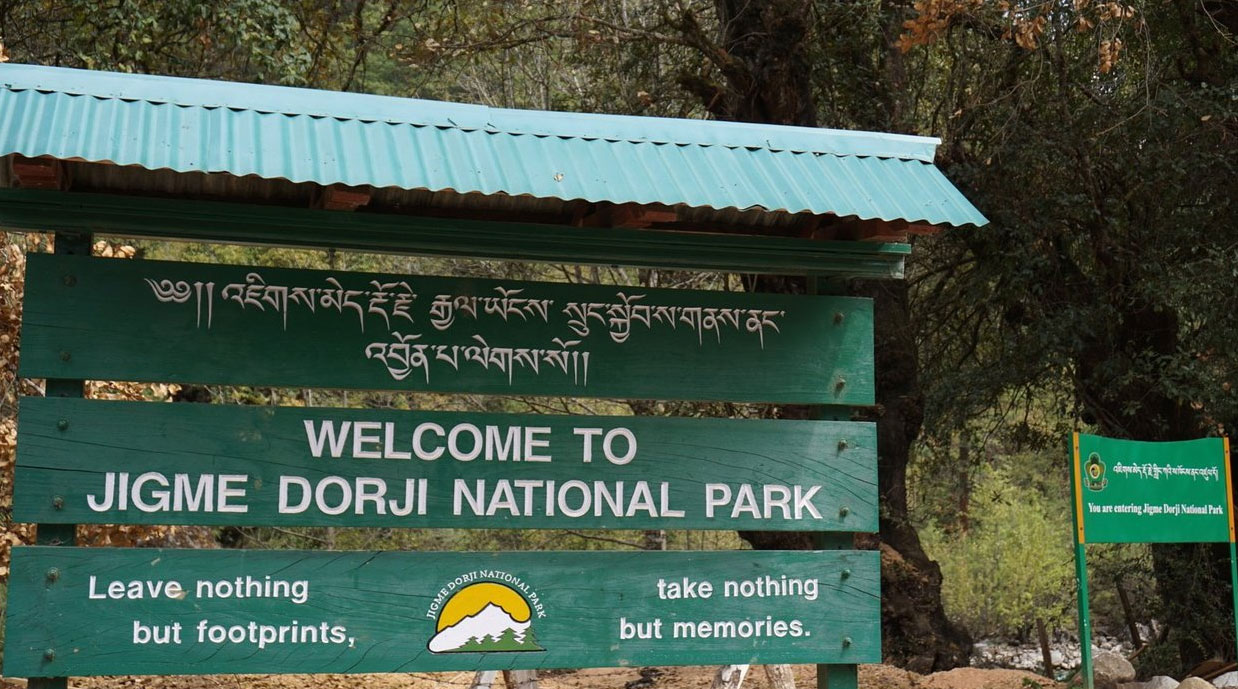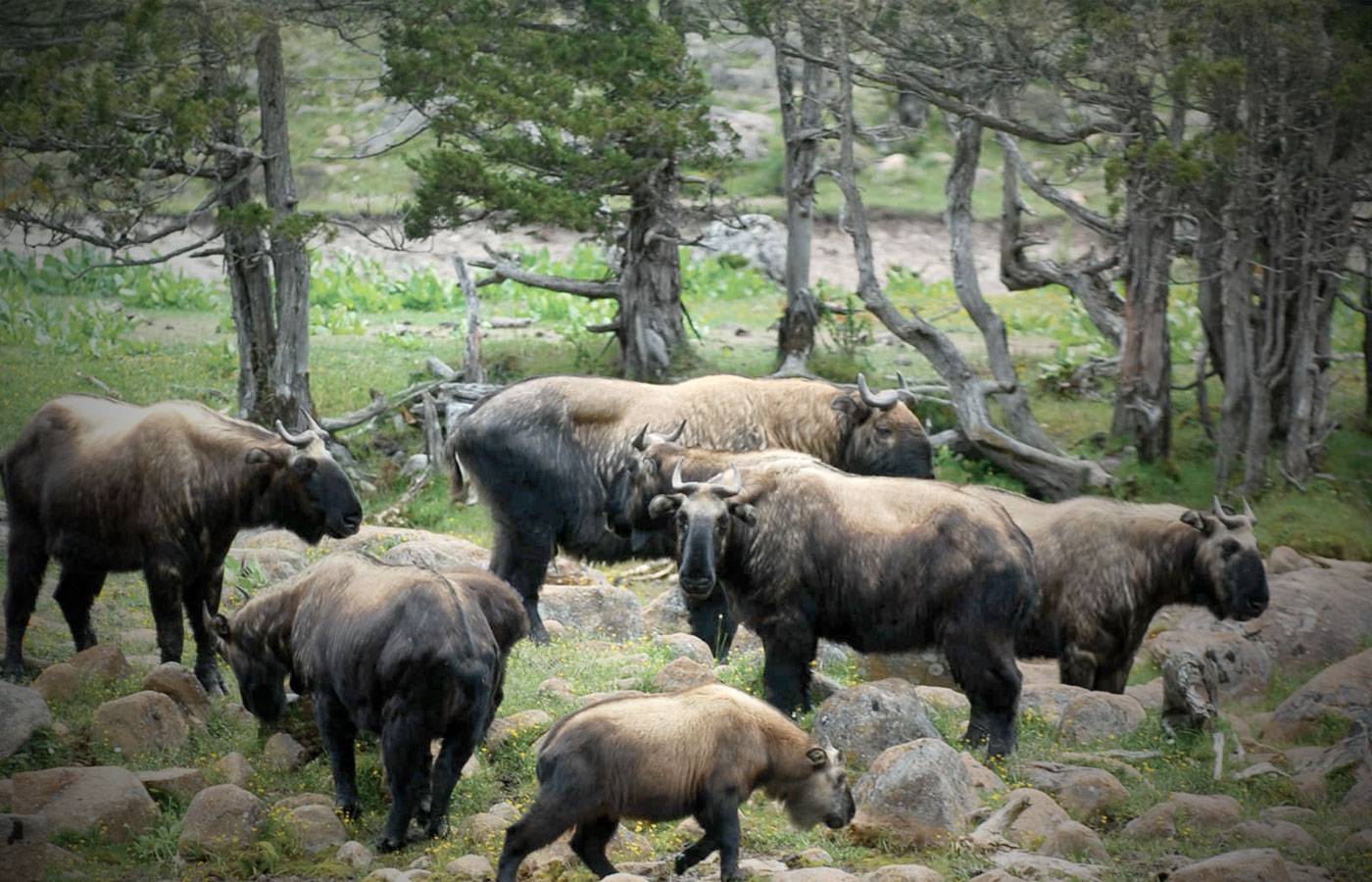Bhutan, a country nestled at the foot of the mighty Himalayas, is not only a haven for spiritual tranquility but also a sanctuary for nature lovers. The country boasts a wealth of national parks and wildlife sanctuaries, offering travelers an unparalleled opportunity to immerse themselves in diverse ecosystems. From the towering peaks to dense forests, Bhutan’s protected areas offer an exceptional glimpse into the kingdom’s rich flora and fauna, as well as its efforts to preserve these pristine environments. For those seeking a luxury tour that connects them to nature, Bhutan’s national parks and wildlife sanctuaries are the perfect destination.
Jigme Dorji National Park: Bhutan’s Majestic Nature Reserve

Spanning over 4,350 square kilometers, Jigme Dorji National Park is the second largest national park in Bhutan and a crown jewel of the country’s natural beauty. The park is named after King Jigme Dorji Wangchuck, who played a pivotal role in Bhutan’s modern history. A luxury tour through this magnificent park will give you a chance to explore one of Bhutan’s most pristine wildernesses. The park is home to the Bhutan takin, the national animal, as well as a range of endangered species, including the snow leopard and Himalayan black bear. As a UNESCO World Heritage Tentative site, the park is also home to the country’s four national symbols: the blue poppy, the raven, the cypress tree, and the takin. A visit to this park is an opportunity to experience the raw beauty of Bhutan’s natural landscape while staying at luxury resorts nestled at the foot of the mountains.
Jigme Singye Wangchuck National Park: Nature’s Gateway to the Black Mountains
Jigme Singye Wangchuck National Park, covering a vast area in central Bhutan, is the largest national park in terms of land area. The park is named after Bhutan’s fourth king, who reigned from 1972 to 2006 and was known for his commitment to environmental preservation. This park offers a peaceful, serene experience, with sweeping views of the Black Mountains and lush valleys. Its central location plays a critical role in preserving migratory bird routes, and birdwatchers visiting this park can expect to spot rare species as they trek through its varied landscapes. For a luxury experience, this park offers access to eco-friendly lodges that provide a comfortable base for exploration while ensuring that the local environment is preserved.
Royal Manas National Park: The Oldest National Park in Bhutan

As the oldest national park in Bhutan, Royal Manas National Park holds a special place in the heart of nature enthusiasts. Located in the south-central region of the country, this park shares a border with India’s Manas Tiger Reserve. The park is an exceptional example of the tropical and subtropical ecosystems of Bhutan. With its diverse habitats, including grasslands, wetlands, and forests, the park supports an extraordinary variety of wildlife, including Bengal tigers, Indian rhinoceroses, and over 300 species of birds. A luxury tour of this park can offer travelers the unique experience of staying in deluxe wilderness resorts that provide an intimate connection with nature, all while ensuring the highest standards of comfort and luxury.
Phrumsengla National Park: A Hidden Gem for Trekking and Birdwatching
Located in the central and eastern regions of Bhutan, Phrumsengla National Park is a birdwatcher’s paradise. The park is home to more than 340 species of birds, including several endangered species. Its remote and tranquil environment offers luxury travelers a chance to experience pristine landscapes, ranging from sub-tropical forests to alpine meadows. The park is also home to the breathtaking Thrumsingla mountain pass, which is Bhutan’s second-highest pass. For those interested in trekking, Phrumsengla provides a spectacular backdrop, with luxury eco-resorts offering a restful retreat after a day of exploration.
Wangchuck Centennial Park: Bhutan’s Largest and Most Scenic National Park
At an impressive 4,900 square kilometers, Wangchuck Centennial Park is the largest national park in Bhutan. Located in the northern part of the country, this park is an ideal location for those looking to explore Bhutan’s remote wilderness in comfort and style. Established in 2008 in honor of the Wangchuck dynasty, the park spans five districts, from Gasa in the west to Bumthang in the east. The park’s natural beauty is complemented by its rich cultural significance, as it is home to various sacred sites and ancient monasteries. Luxury travelers can enjoy the serenity of the park’s high-altitude forests, crystal-clear streams, and pristine alpine meadows. For the discerning traveler, luxury lodges within the park offer the perfect blend of wilderness and comfort, making it an unforgettable experience.
Jigme Khesar Strict Nature Reserve: A Sanctuary for Conservation
The Jigme Khesar Strict Nature Reserve, formerly known as Toorsa Strict Nature Reserve, is a significant conservation area in southern Bhutan. This 609-square-kilometer reserve is dedicated to protecting the natural habitats of endangered species such as the Bengal tiger and the clouded leopard. It is also home to the beautiful alpine landscape of the eastern Himalayas. Visitors can experience the stunning natural beauty of the area while staying in high-end resorts that offer a perfect blend of nature and luxury. Whether trekking through dense forests or simply enjoying the serene environment, this reserve offers a one-of-a-kind experience for those looking to immerse themselves in Bhutan’s wildlife and conservation efforts.
Bumdeling Wildlife Sanctuary: A Paradise for Butterfly Enthusiasts

Bumdeling Wildlife Sanctuary, located in the northeastern part of Bhutan, is not only a paradise for birdwatchers but also for butterfly enthusiasts. Home to Bhutan’s only endemic butterfly, Ludlow’s Bhutan Swallowtail, the sanctuary is a treasure trove of biodiversity. The sanctuary is also home to over 700 plant species, 340 bird species, and a variety of mammals, including the Himalayan blue sheep and the endangered snow leopard. A luxury tour of the Bumdeling Wildlife Sanctuary offers travelers an opportunity to explore its rich natural beauty through guided treks and eco-luxury lodges. The sanctuary is also an ideal location for cultural tourism, as it is surrounded by traditional Bhutanese villages.
Jomotshangkha Wildlife Sanctuary: The Smallest but Richest Sanctuary
At 275 square kilometers, Jomotshangkha Wildlife Sanctuary is the smallest protected area in Bhutan but one of the richest in terms of biodiversity. Located in the southeastern region of Bhutan, this sanctuary is home to diverse wildlife, including elephants, tigers, and various species of birds. It offers a more intimate and off-the-beaten-path experience for luxury travelers who want to get closer to nature. The sanctuary’s rich ecosystem is complemented by the tranquil surroundings, making it a perfect destination for nature lovers looking to experience Bhutan’s wild side in comfort.
Sakteng Wildlife Sanctuary: The Red Panda’s Home
Sakteng Wildlife Sanctuary, established in 2003, is one of Bhutan’s most recent protected areas. Spanning 650 square kilometers, the sanctuary is located in the easternmost region of the country and is renowned for its rich biodiversity, including the elusive red panda. Known as the “paradise of rhododendrons,” the sanctuary is home to 35 species of rhododendrons, which bloom in a dazzling array of colors during the spring months. Luxury tours to this remote sanctuary often include guided wildlife safaris and cultural experiences in nearby villages, offering a perfect blend of adventure and relaxation.
Phibsoo Wildlife Sanctuary: A Sanctuary for Spotted Deer and Bengal Tigers
Located in the southern part of Bhutan, Phibsoo Wildlife Sanctuary is home to a variety of wildlife, including the spotted deer (chital), Bengal tigers, and Ganges dolphins. Despite its relatively small size, the sanctuary plays a critical role in preserving Bhutan’s rich biodiversity. It also offers unique opportunities to explore Bhutan’s southern forested region, which is home to sal trees, a rare and slow-growing evergreen species. Visitors can enjoy guided nature walks and stay at luxury eco-lodges that offer an immersive experience in one of Bhutan’s most captivating landscapes.
Conclusion
Bhutan’s national parks and wildlife sanctuaries are an exceptional blend of nature and culture, offering a deep connection to the kingdom’s natural heritage. For those looking for a luxury tour that combines adventure, wildlife, and the serene beauty of the Himalayas, Bhutan’s protected areas offer a once-in-a-lifetime experience. Whether you’re exploring high-altitude national parks, experiencing rare wildlife encounters, or staying in luxury eco-lodges, Bhutan’s commitment to conservation ensures that visitors experience the country’s natural wonders in the most sustainable and luxurious way possible.

